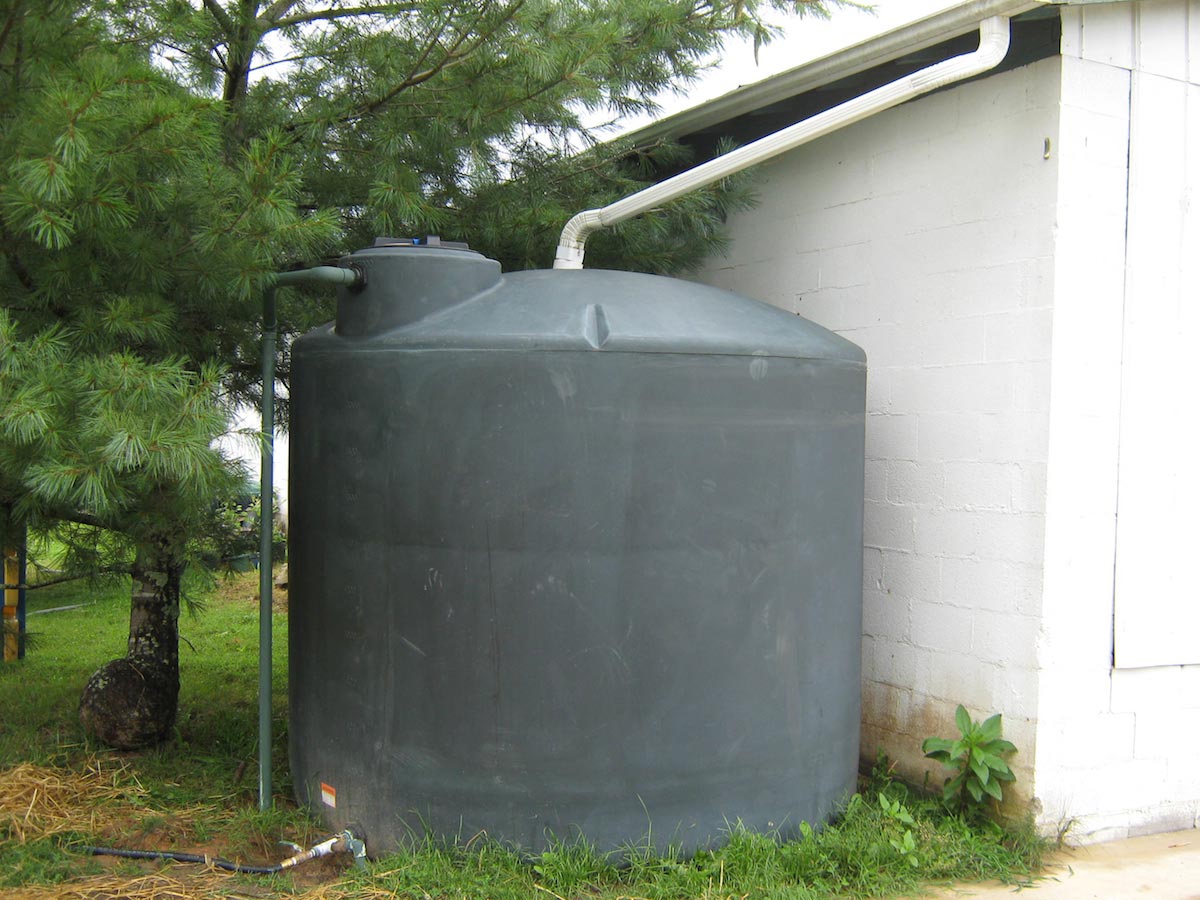
However, successful and sustainable rainwater collection requires more than just leaving a barrel outdoors and waiting for it to fill up.
Read on to learn more about rainwater collection. (h/t to CommonSenseHome.com)
Why collect rainwater
Unlike well water and treated water, rainwater is naturally soft. This means it is free from dissolved salts of calcium, iron, magnesium and other metals. Those salts, which are present in hard water, form unsightly deposits on kitchenware. Though not a health risk, hard water can be a nuisance because of those buildups.
If you live on a homestead, collecting rainwater is not only a wise decision but a necessary one as well. One rain barrel can contain enough water for a 200-square-foot garden. Rainwater can also be used for livestock and for washing, cooking or bathing purposes. When filtered and purified, rainwater can even be consumed.
Harvested rainwater is especially good for irrigation because groundwater and surface water are often very high in salt, which can be problematic for plants. In contrast, rainwater does not contain salt even if it evaporated from the ocean. Plus, rainwater contains natural fertilizer in the form of nitrogen.
Aside from reducing water usage, collecting rainwater ensures you have clean water in case of a drought. A rainwater collection system also ensures you have water in case of emergencies that compromise your access to municipal water supplies and electricity. (Related: Homesteading 101: How to conserve water on your property.)
In fact, some rainwater collection systems can be set up so that they can be a water source if the power goes out during a disaster or emergency.
Municipal water can also be expensive, especially in the summer. Collecting rainwater is basically a way for you to get water for free and save money.
Practical considerations when collecting rainwater
Rainwater collection is legal in the United States. However, the rules on how you collect rainwater and how much you can collect vary by state. Some states have specific laws in place limiting rainwater collection and use. It is best to check your local regulations before investing in a rainwater collection system.
States with rainwater collection regulations include:
- Arizona
- Arkansas
- California
- Colorado
- Illinois
- Nevada
- New Jersey
- North Carolina
- Ohio
- Oklahoma
- Oregon
- Texas
- Utah
- Virginia
- Washington
Once you have verified the rainwater regulations in your region, determine how much water to collect. One square foot covered with water an inch deep equals around 0.62 gallons. This means that the amount of rainwater you could harvest from a 1,000-square-foot roof from an inch of rain is up to 623 gallons.
However, due to splashing and other losses, a more realistic number is 550 gallons of rainwater harvested per inch of rain per 1,000 square feet of collection surface.
A strong rain can easily fill one barrel, so make sure you have enough containers for the rainwater. You can collect rainwater in all kinds of containers. But no matter the size or shape of your container, it should have the following elements:
- Inlet – This will direct rainwater into the container. It should be on top of the container.
- Outlet – This will allow you to dispense and use the collected rainwater. It is typically near the bottom of the container. For large tanks, you can make an outlet using a hose and a hose bib.
- Opaque material – Your container should be made of an opaque material to keep sunlight out. Otherwise, algae may thrive in the water. Alternatively, you can cover the container with a heavy tarp.
- Fine-mesh screens – Having fine-mesh screens in place over the inlet and outlet of your container will help prevent the entry of insects, pests or debris.
If you plan to use rainwater for drinking, make sure to filter and purify rainwater beforehand. Downspouts and gutters collect grime and bits of debris over time, which need to be removed.
For more tips on how to improve your homestead, visit Homesteading.news.
Sources include:
Please contact us for more information.























